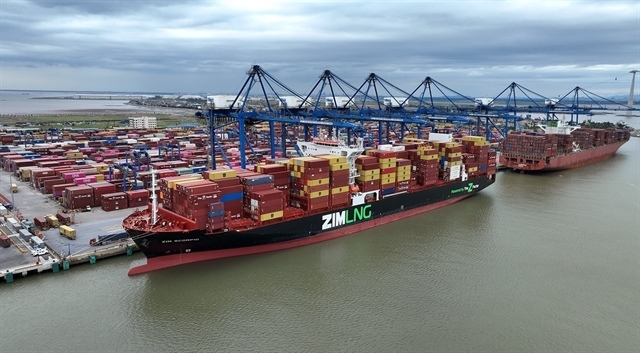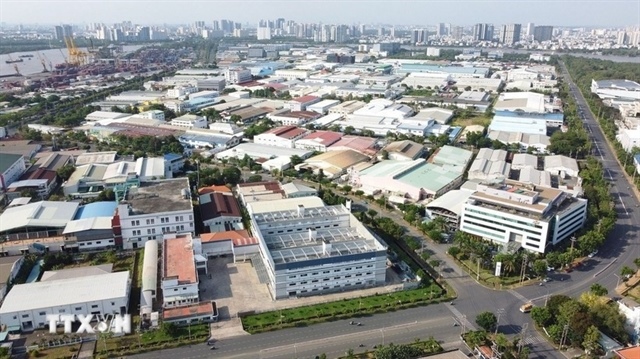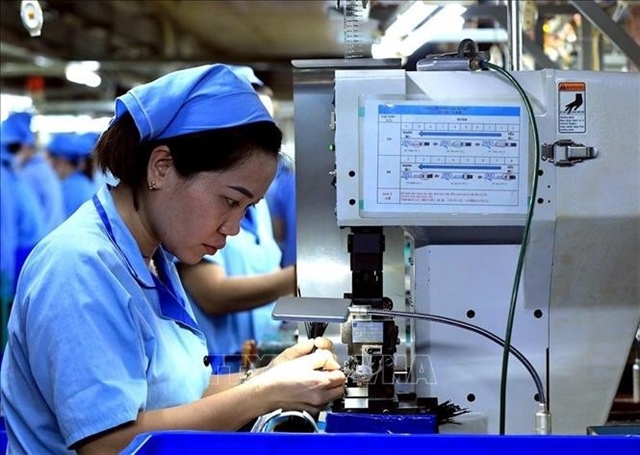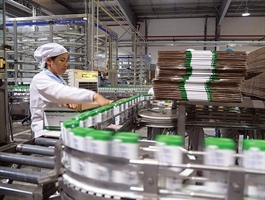Aiding digital growth via ambitious EVFTA
Aiding digital growth via ambitious EVFTA
Vietnam is taking a number of actions to accelerate digital transformation to adapt to the global health crisis and to develop in the new normal. Giorgio Aliberti, EU Ambassador to Vietnam, talked to VIR’s Bich Thuy about the importance of the EU-Vietnam Free Trade Agreement for spurring the digitalisation in the country.

Giorgio Aliberti, EU Ambassador to Vietnam
|
This year is witnessing massive progress in digital transformation. How can the EU-Vietnam Free Trade Agreement (EVFTA) further accelerate the process and bring benefits to Vietnamese businesses?
The EVFTA is more than an agreement. It is one of the most comprehensive and ambitious FTAs that we have in the world and a strong platform that both sides can use to their advantage.
Thanks to the agreement, Vietnam can change its regulatory framework for the digital transformation in a way that promotes the development of electronic commerce between the EU and Vietnam.
We have been seeing what impact the pandemic has on global economies, and how important it is to have sophisticated digital platforms. The EVFTA creates the right framework for such platforms by supporting e-commerce between Vietnam and the EU.
What new movements from EU businesses have you seen to tap into growth potential of digital transformation in Vietnam?
It is a bit early to say anything about new movements. Most European countries still deal with the pandemic so many firms cannot make any business trips or advances in negotiations.
However, the EVFTA is expected to contribute to increasing European investment into Vietnam, especially in the high-tech industry which is highly favourable for digital transformation. In addition, the agreement offers countless opportunities for Vietnam to get access to European know-how, technology, and expertise.
Could you evaluate the EVFTA’s performance in bilateral trade and investment flows since it took effect three months ago?
During the first days after the enforcement of the agreement, some positive results for Vietnamese companies were already visible. Their exports to the EU market have increased, particularly for seafood, and both sides also engaged in several other activities.
But I would see these just as the very first encouraging signs about effects the EVFTA will have. However, we have to see in the long term what outcomes the agreement will have for both partners. The initial trade is just a small part of what will come, and we should consider the wider aspects of the agreement.
Vietnam is one of the fastest-growing economies in the world and it is also an attractive market for European businesses. Moreover, procedures like buying goods online and shipping them quickly thereafter can happen effortlessly thanks to the advancement of digital technology.
With these changes, the trade between the EU and Vietnam will become less complicated and less time-consuming. In short, the EVFTA is a very potential platform for sharing common values and economic benefits between both sides.
|
Vietnam’s digital economy has been booming and is the second-fastest growth market in Southeast Asia after Indonesia. The internet-based economy of Vietnam reached a value of $12 billion in 2019, with an annual growth rate of 38 percent since 2015, and is expected to surge to $43 billion by 2025. In 2019, an estimated 61 million Vietnamese went online and the average person spent three hours and 12 minutes each day using the internet on mobile devices like smartphones. Vietnam is also committed to expanding its digital economy, expecting it to occupy 20 per cent of its GDP by 2025. Social distancing and lockdown during pandemic have further accelerated the use of digital technologies to mitigate the impacts on businesses and social life. As such, the digital transformation is an indispensable factor to help businesses gradually get used to the new normal. Since the beginning of 2020, 61 per cent of surveyed business leaders have already seen changes in customers’ purchasing behaviour and motivations, while 22 per cent have not seen any changes in their customer’s needs, and 16 per cent remained unsure. Prior to the COVID-19 crisis, the drivers of technology were focused on cost reduction and productivity, and their goal was to make well-run businesses run even better. Source: Report delivered at the roundtable “Digital economy and digital transformation with the EVFTA” in Hanoi last week |



























